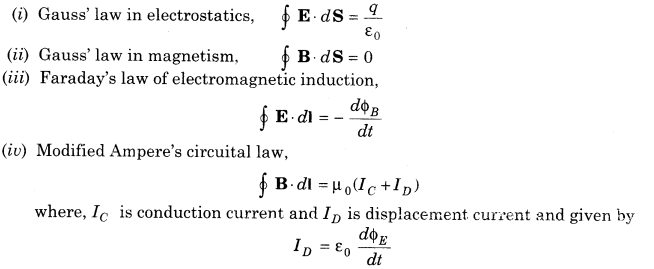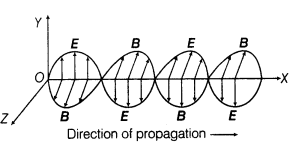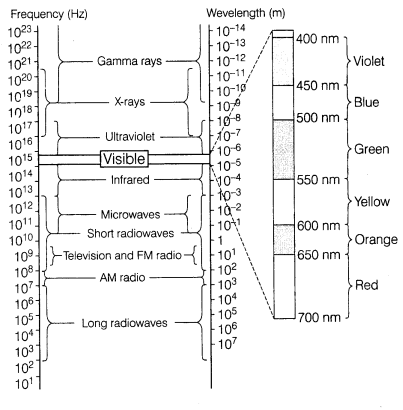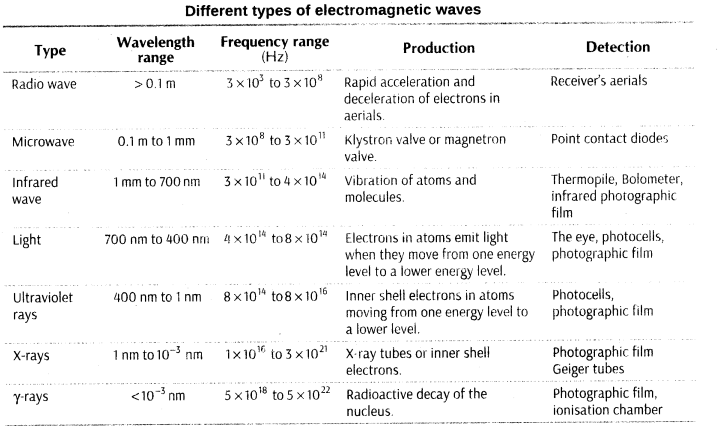Notes For All Chapters Physics Class 12 CBSE
1. Displacement Current The current which comes into play m the region in which the electric field and the electric flux is changing with time. It is given by
2. Need for Displacement Current Ampere’s circuital law for conduction current during charging of a capacitor was found inconsistent. Therefore, Maxwell modified Ampere’s circuital law.
3. The displacement current produces in space due to change of electric flux linked with the surface. This reveals that, varying electric field is the source of magnetic field.
4. Maxwell’s Equations of Electromagnetic Waves Maxwell’s equations are the basic laws of electricity and magnetism. These equations give complete description of ail electromagnetic interactions.
There are four Maxwell’s equations which are explained below:
5. Electromagnetic Waves An electromagnetic wave is a wave radiated by an accelerated or oscillatory charge in which varying magnetic field is the source of electric field and varying electric field is the source of magnetic field. Thus two fields becomes source of each other and the wave propagates in a direction perpendicular to both the fields.
6. Electromagnetic waves are transverse in nature, i.e. electric and magnetic fields are perpendicular to each other and to the direction of wave propagation. Electromagnetic waves are not. deflected by electric and magnetic fields.
7. E (electric field) and B (magnetic field) in electromagnetic waves are in same phase.
8. Speed of electromagnetic wave
9. The energy in electromagnetic wave is divided on average equally between electric and magnetic fields.
11. Linear momentum delivered to the surface, p= U/c
where, U = total energy transmitted by electromagnetic waves and c = speed of electromagnetic wave.
12. Electromagnetic Spectrum The systematic sequential distribution of electromagnetic waves in ascending or descending order of frequency or wavelength is known as electromagnetic spectrum. The range varies from 10-12 m, to 104 m, i.e. from γ-rays to radio waves.
13. Elementary facts about the uses of electromagnetic waves
Radio waves
(i) In radio and TV communication.
(ii) In astronomical field.
Microwaves
(i) In RADAR communication.
(ii) In analysis of molecular and atomic structure.
(iii) For cooking purpose.
Infrared waves
(i) In knowing molecular structure. (ii) In remote control of TV VCR, etc.
Ultraviolet rays
(i) Used in burglar alarm. (ii ) To kill germs in minerals.
X-rays
(i) In medical diagnosis as they pass through the muscles not through the bones.
(ii) In detecting faults, cracks, etc., in metal products,
γ-rays
(i) As food preservation. (ii) In radiotherapy.
14. The optical effect is produced by electric field vector of the electromagnetic waves.






Leave a Reply